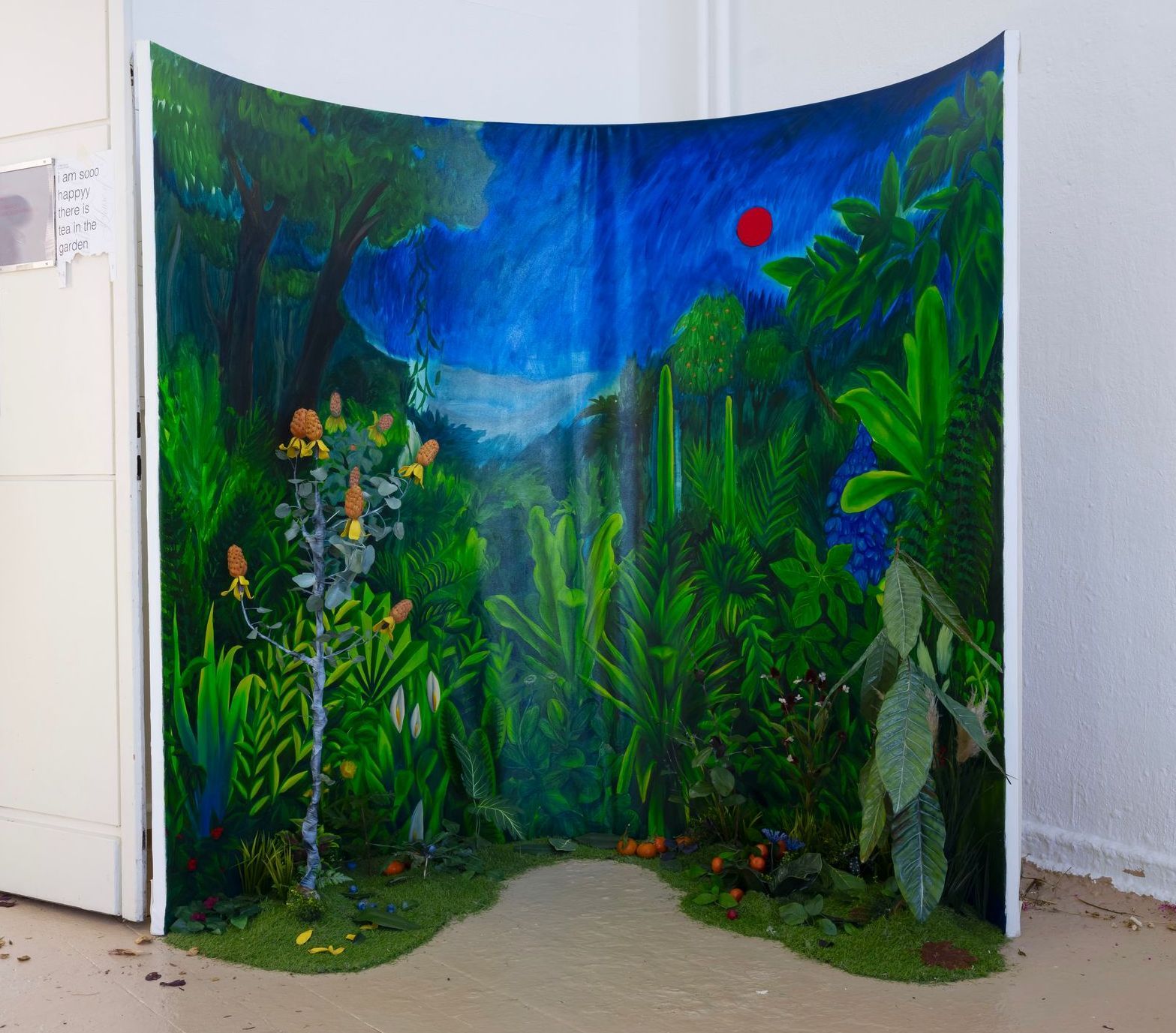how much has to change till I notice this isn't real anymore?
The diorama invites visitors to immerse themselves in a non-existent world. What at first glance looks like a tropical landscape turns out on closer inspection to be a carefully arranged array of plants, characters and chimeras.
This is the first time the artist has combined her chimera plants with her painting.
Everything seems somehow familiar and yet disconcerting. The colours seem too exaggerated, too garish, and traces of human intervention can be seen everywhere, be it brushstrokes, wires, artificial grass or traces of glue. In contrast to most dioramas, as the viewer may be familiar with from natural history museums, for example, where an attempt is usually made to depict an illusion of a place that is as true to nature and accurate as possible, here the artist quite openly shows her intervention and thus calls this into question. Dioramas often show an ‘untouched nature’, a nature without human intervention, but everything about them is man-made. According to the artist, dioramas can be seen much more as a time capsule of our self-image and our view of what we call nature. The dioramas are and have been silent witnesses to our scientific, political, artistic, romanticising and even colonising endeavours. In this respect, it is perhaps the most human thing of all to build a diorama.
Special thanks go to the Botanical Garden in Düsseldorf and the Alexander König Museum in Bonn.
documentation: Susanne Polzin, Ronja Greiner
learn more about Chimera-Plants>>






